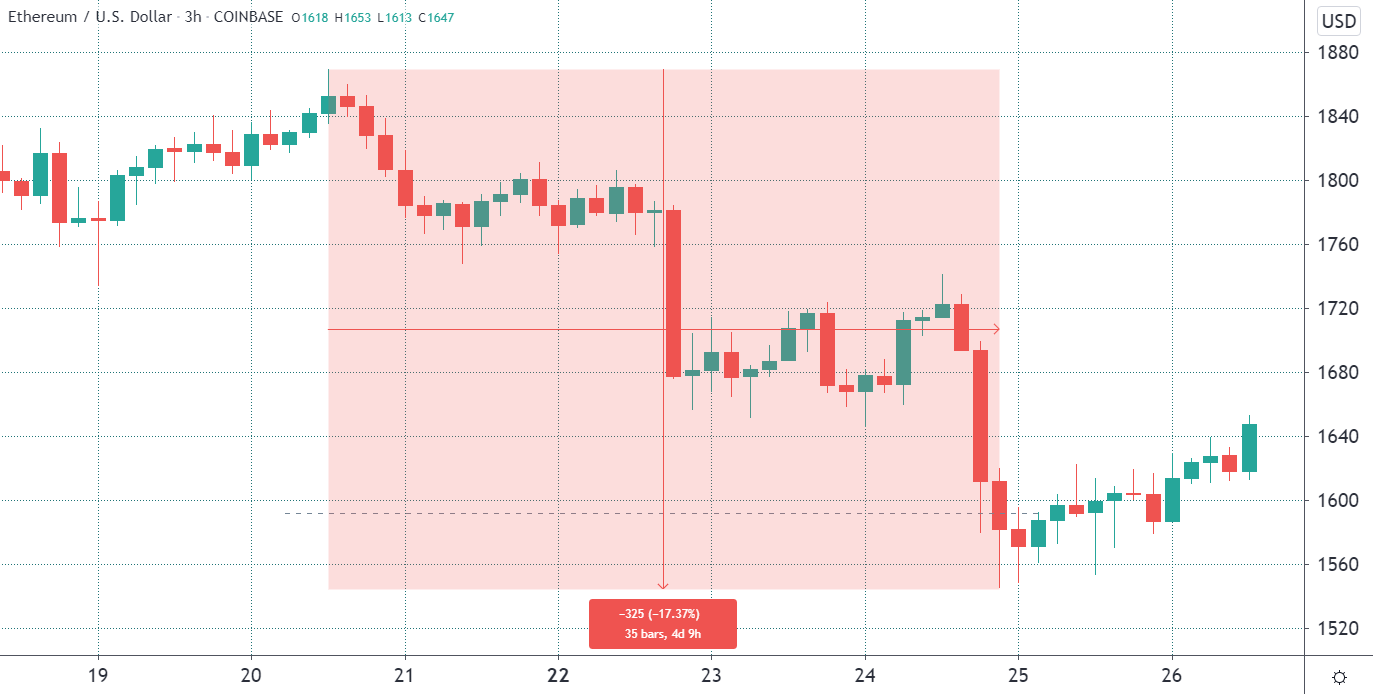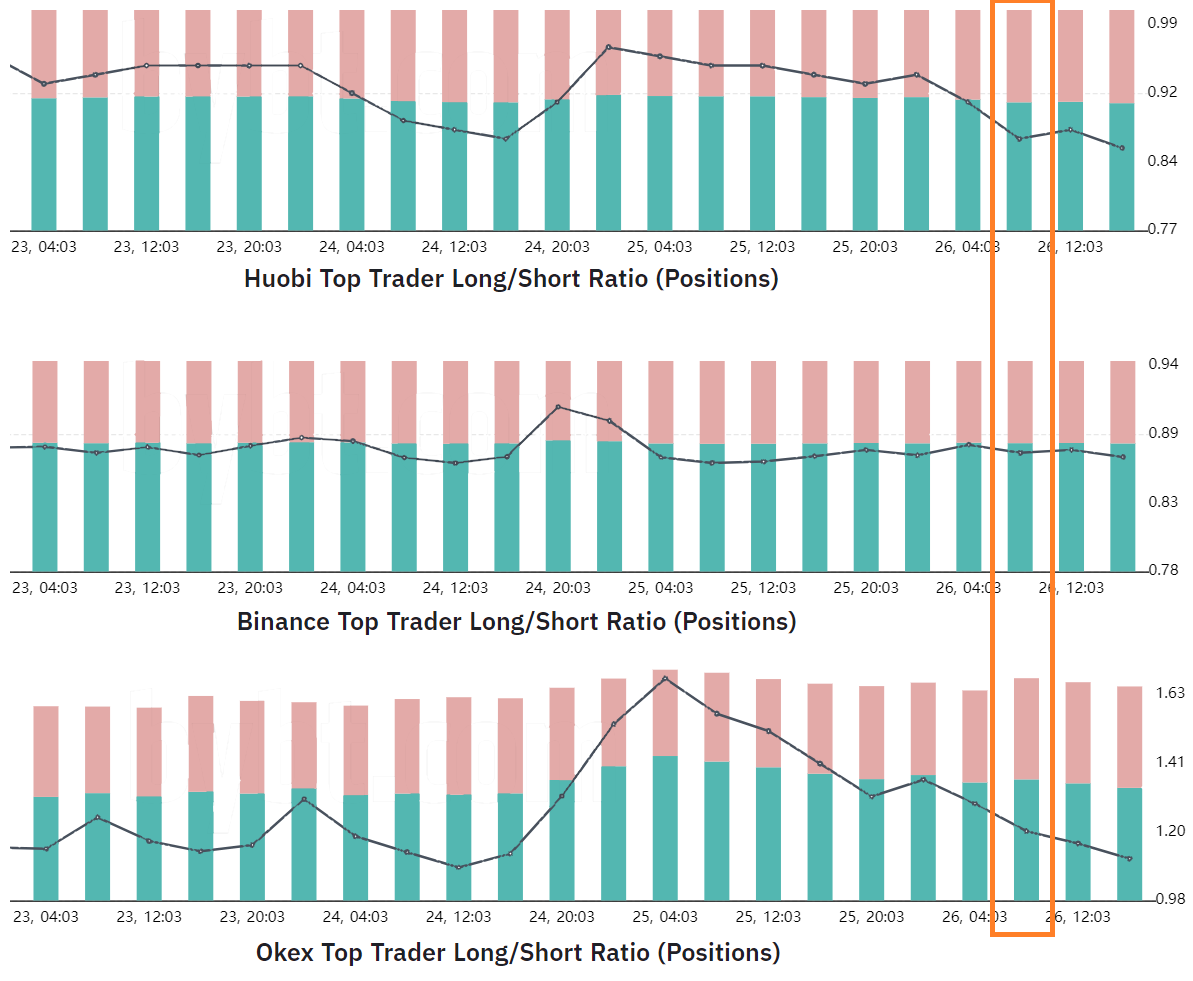Ether (ETH) rebounded from a $1,550 low on March 24, which marked a 17% fall from the $1,870 weekly high. Even though the $1.15 billion options expiry in the early hours of March 26 could have pressured Ether price, the continuing surge in gas fees for Ethereum transactions likely played a part.
To better assess these forces, one should analyze top traders’ exposure using data provided by the largest crypto exchanges. If the case for the options expiry holds, the long-to-short data from whales and arbitrage desks will show buying activity after the options expiry at 8:00 UTC.
 Ether price at Coinbase, USD. Source: TradingView
Ether price at Coinbase, USD. Source: TradingView
Although the Ether price held relatively stable at $1,630 at the time of the expiry, there needs to be some evidence of top traders reverting the previous price pressure. If this is not the case, then there should be no reason to believe that the recent sell-off was related to the options expiry.
To confront the options-induced price drop theory, a report by CoinMetrics concluded that the highly anticipated EIP-1559 network upgrade is not likely to solve the problem of high gas costs.
The report mentions that only scaling solutions will genuinely fix the problem. Therefore, top traders would have more significant issues to worry about, pressuring Ether price regardless of the expiry date.
Traders did not change their attitude
Major cryptocurrency exchanges provide the long-to-short net positioning. This indicator is calculated by analyzing the client’s consolidated position on the spot, perpetual and futures contracts. Therefore, it gives a clearer view of whether professional traders are leaning bullish or bearish.
It is important to note that there are occasional methodology discrepancies between various exchanges, so one should monitor changes instead of absolute figures.
 Exchange’s top traders Ether long-to-short ratio. Source: Bybt
Exchange’s top traders Ether long-to-short ratio. Source: Bybt
The chart above shows that top traders have been reducing their positions over the past 48 hours, and the movement remained after the options expired (orange bar). These whales and arbitrage desks increased their exposure as Ether price crashed 10% on March 24 and have since been taking profits.
It is worth noting that the 1.56 ratio favoring longs on OKEx was the highest level seen in March, signaling that top traders were confident that the $1,550 support would hold.
Given that this movement took place 36 hours ahead of the options expiry, it weakens the thesis that whales pushed Ether price downward to somehow profit from it.
A similar trend took place at Huobi, where top traders’ net long-to-short ratio peaked at 0.96 on March 25. Albeit slightly favoring shorts, the indicator hadn’t seen such levels since March 7. Therefore, it further signals that there was no selling pressure targeting the March 26 options expiry.
Thus, any sustainable Ether price rebound, let alone a new all-time high, should occur as Eth2 and sustainable scaling solutions are put into place. Currently, there’s no reason to believe that options markets have masqueraded the price.
The views and opinions expressed here are solely those of the author and do not necessarily reflect the views of Cointelegraph. Every investment and trading move involves risk. You should conduct your own research when making a decision.






